Memories are the key not to the past, but to the future … – Aniruddha Joshi

Memories are the key not to the past, but to the future … – Aniruddha Joshi
Dear all,
When we received the National Startup Award 2021 in the health – AYUSH category (first-ever), I was asked in almost every interview “what brought an engineer into the Ayurveda field?” and I was mostly given 15 to 30 seconds. Yesterday, again in one TV-interview at Kolkata, the same thing happened. It’s difficult to cover so many thoughts in 30 seconds. So, today let me write a detailed blog to highlight the key incidents of my journey so far developing Nadi Tarangini and beyond.
How it all started …
The whole journey started during my engineering days, when my father Padmabhushan Dr. J. B. Joshi was not well for quite some time. He took the advice of his guide Dr. M. M. Sharma and we visited Vaidyaraj Ashok Bhat, a renowned Nadi expert. Until then I had never visited any Ayurvedic doctor or setup as such. The clinic was very typical with silence all around and the smell of Ayurvedic medicines.

When Vaidyaraj Bhat checked my father’s pulse, he was able to find out the root cause of the suffering and promised that he would solve the problem. There will be a positive immediate effect of the treatment and in the six month’s time, all will be normal. Well, eventually it took slightly longer, but it actually helped !!
During the discussions of both of them, being the Chemical Engineer, my father thought that there is some Fluid Dynamics happening in the pulse region which Vaidyaraj is able to feel.
As engineers, we were amazed and curious how just the “art of feeling of the pulse” is able to give so much information about the body and mind.
Both Vaidyaraj and my father decided that we have to extract this knowledge scientifically and I started working on the same. Based on the Gate score, I got admission in IIT Bombay for a PhD program and so thankful to Prof. Sharat that he agreed to guide me on this topic. I think, My PhD topic was one of its kind where Ayurveda was studied at a premier technology institute.
Initial experiences which challenged and changed my thought process …
I think the PhD days and the interaction with Vaidyaraj were the best days of my life, so much learning – and it is still guiding me in some way!!
In the initial days, he taught how he “feels” the nadi, how he learnt himself, how he is teaching his students and so on.
At IIT Bombay, based on the set steps of how the ECG machine was developed in the past 150 years, I started working on the sensors. I started with the mike (let me hear what the pulse says), then the simplest capacitive pressure sensors, then the optical sensors. All the 7-8 sensors and data acquisition methods (work of almost 1.5 years) were giving good pulse waveforms; but Vaidyaraj was not happy with the visual display of the waveforms. He was not able to see the “nadi” that he feels of the patients.
Going deeper and working closely with Sharmaji (a very talented domain expert in embedded systems), I used the piezo pressure sensor of very minute pressure range (very sensitive), and bingo. On one day, when I showed the print-out of the pulse waveforms taken from a user; just by looking at the image, Vaidyaraj was able to tell:
-
Who could be the person?
It’s a Nadi of female of age 20, 25, 30.
-
What could be the symptoms?
She is having chest pain.
-
What could be the root cause?
The pain is due to gasses.
-
What could be the simple natural solution?
Ask her to have ABCD before meals for the next 7 days.
To my surprise, I had taken Meghana’s nadi because she was having chest pain. At that time, we knew we had cracked the sensor, now the big task was to understand what he actually “saw” and mathematically code it.
The journey of “rule-based intelligence” started in his clinic and I had the most amazing experiences during the data collection process. Our final database was of 500 patients along with Vaidyaraj’s inputs. We used to discuss a patient’s journey, disease journey, what could be different reasons and what patterns in the pulse waveforms indicate any of those points.
And along with that, there was a completely different journey:
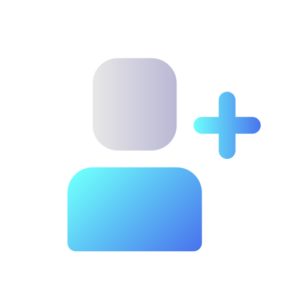
Doot Nadi
A doot-nadi of a pregnant woman’s husband was studied (she was in a different city at that time) and again, based on the pulse waveforms he was able to diagnose what issues she was suffering through. The husband agreed to each and every point. For me, that was magical. Well later, we worked on so many doot-nadis and in my journey a few years later – I will definitely work on this. Not now, later when things are in control.

Paralyzed Person
We took the pulse of a paralyzed hand, and a non-paralyzed one. And to my surprise, the pulse waveform patterns showed the exact correlations which he was talking about.

Input, Transformation, Output and Storage
During one of the interactive sessions, my laptop was behaving incorrectly. It was slow and had become hot. I knew it was because of the fan issue. But on that day, Vaidyaraj explained to me how each of the battery, ram, rom, fan, hard disk etc components of a laptop is functioning exactly like different organs systems in a human body. How exactly the same functional blocks are there in any typical warehouse and so on. It’s all about Input, Transformation, Output and Storage. And how the whole system collapses when any one of these does not work properly. And how Vata is the most important in all considering the all above and also, how Prana is most important in Vata. And he actually went ahead on Prana (which I don’t remember now).
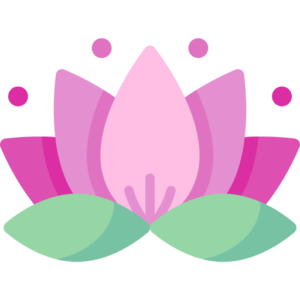
Power of breathing and meditation
One day, he was explaining the power of breathing. He told me to connect the sensors to his hand. And told me not to stop until I see a change. Well, the pulse waveform was flowing normally. And after 45-50 seconds the pulse patterns changed. They became abnormal and by the end of 1 minute, the pulse waveform was almost flat (with some noise of course), but it was more like a dead-nadi. And after a few seconds, the pulse waveform became absolutely normal. Huff, whenever I remember that day, I still go numb.

Nadi of Trees
And Nadi of trees using the same Nadi Tarangini sensors was such a pleasant experience. Nadi changes when his wife is talking to those trees and so on. At the moment, I cannot even explain what it was, but maybe some other time.
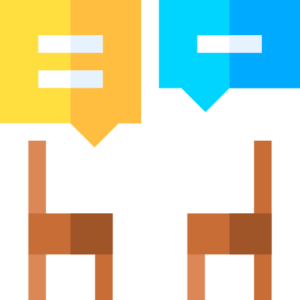
Nadi of Chair
Also, we had discussed and tried measuring the vibration nadi of chair when the patient actually left the room. Well, nothing was captured as such, but he wanted me to work on that for sure. Let’s see.
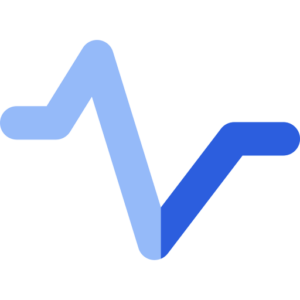
3D Pulse
And then I had also developed one method where you get a 3D pulse from the same location. He was so happy and we worked on the energies, temperatures, and different parameters in that 3d pulse. The code and knowledge is still there on the computer. I promise, I will open up that chapter very soon…

Unbiased Nadi
During our discussions and also with one of his students from the USA, it was also thought that Aniruddha should/ may/ will not actually learn the Nadi Pariksha, as it has to be solved completely data-driven without any bias in mind.
And so many experiences, so many memories…
Vaidyaraj has given me 6 goals on Nadi (let me say I remember only 6) during the discussions. Believe me, every goal is scary – as each goal connects “any” person’s nadi directly to the whole nature or universe.
But I can only say, I have 25 more active years for sure. I am hopeful and definitely have all the spiritual energy that he has given me, to systematically work on any of the above.
It’s a matter of time, money and courage 🙂
3 turning events.
Sometimes you don’t decide the journey, but a few incidents decide the pivoting points.
01.
I have already talked about the first: My father asking me to work in this area …
02.
When I submitted my PhD thesis, there were discussions (let me not take names) that even though there was a patent and 7-8 papers in the peer-reviewed journal, the work might be called non-scientific because Ayurveda is not a science. It was not clear to us; how can that be. How a thousand-year-old science, which still has relevance today, be called non-scientific. Well, it is just that it is not a science in today’s language of science. My co-guide Dr. B. D. Kulkarni from NCL Pune applied for the CSIR grant and continued working on the same topic. There, we mainly worked on the validation process. And now at Atreya Innovations, are working further with many doctors, mentors and thought leaders to get the due scientific recognition Ayurveda really deserves. I mean, Ayurveda does not need it. But people all around the world will be benefited by its personalized and preventive nature if explained to them in today’s language of sensors, numbers, reports, comparison, validation, statistical analysis and so on.
03.
When I was about to finish my Post-doc at NCL Pune, I got a chance to meet Mr. Anand Deshpande of Persistent Systems. He highly recommended me to come out of academics and start my own company to take the “project” ahead. I remember all the discussions at home for almost 4 to 6 months about stable jobs vs starting an entrepreneurial journey when everyone at home is either a teacher or a researcher. Eventually we started the company and now received the DSIR recognition also, which supports the research journey 🙂
Important meetings:
The way above were 3 pivoting incidents which defined where we are today, a few meetings are also worth mentioning here.

Dr. Valiathan
padma vibhushan, cardio thoracic surgeon
During one of the conferences, I got a chance to meet Padmavibhushan Dr. Valiathan and later met at his office at Manipal university. Looking at the work and the prototype, he advised me to make sure that the “product” which eventually is launched has to look like a very detailed and professional medical product. We Indians do not give much attention to that and so our products sometimes look substandard as compared to the products from the other countries. He asked me to keep at least 10 to 15 percent of my initial funds for the same. Well, we got the product designed and developed from one of the best Mr. Satish Gokhale of Design Directions and it helped. It’s not just the look and feel but also the ease of use that helped our product journey.

Dr. H.R. Nagendra
Padma Shri, Chancellor SVyasa.
In very early stages of PhD and Postdoc, I think again at one of the conferences, I got a chance to meet Dr. H.R. Nagendra, a Nasa scientist who started the Yoga university at Bangalore. He encouraged me to continue my research, and actually led one project on Diabetes back in 2017-18-19 and I am going to make an announcement in this month itself about taking the same project ahead.

Prof. Dr. G. G. Gangadharan
Director of Ramaiah Indic Specialty Ayurveda
Special thanks to Dr. GG Gangadharan when he added an important factor of 1 : ½ : ¼ angle into my code of calibration. That actually solved the first bottleneck of why a few findings are not matching with Vaidya’s actual findings. That was the major first breakthrough.

Ayurveda Doctors
I should also mention a few early adopters too who helped us rebuild and re-optimise the product further: Dr. Vishwas Jategaonkar, Dr. Mahendra Pate, Dr. Harish Patankar, Dr. Ajit Kolatkar, Dr. Prasanna Kelkar, Dr. Piyush Sikotra, Dr. Abhishek Dadhich, Dr. Amit Rathi, Dr. Arya Anand, Dr. Digambar Nirmale, Dr. Shreeharsha, Dr. Ramesh Vishnoi, Dr. Mangesh Desai, Dr. Rashmi Jitpure, Dr. Rahul Patil, Dr Vanitha Murli Kumari, Dr. Rajesh Chabra, Dr. Madhusudhan Nair, Dr. Shankar Sanap and so on. (Please forgive me if I missed any names.) Also I would like to thank the special data collection sites which help me build the data bank in the initial days including but not limited to NCL hospital, Sanecare, Bharati Vidyapith, Walawalkar hospital, Sion hospital, S-Vyasa, Prakruti Satara, KLE Belgaum, Gandhinagar hospital, Tarachand, Ahmednagar private clinic by Dr Girge, Nashik hospital, Wagholi hospital and so on.
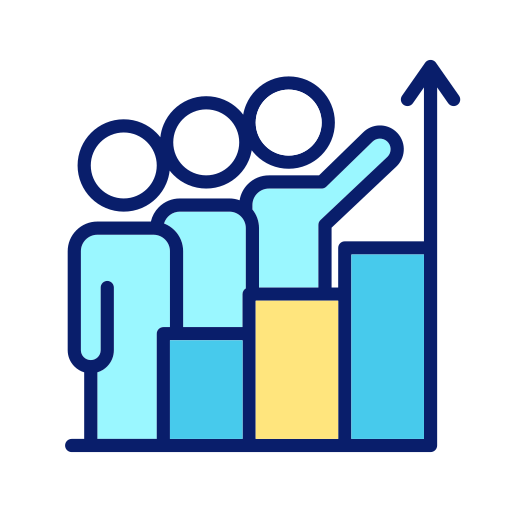
Research Collaborators
Research collaborations with a lot of colleges of Ayurveda and technology have taken the work ahead in all directions. The slides which I present at most places are the results coming out of the collaborative work we do.

Dr. Vishi Bansal
While working with Unilever in 2017-18 on a grant project, we interacted with Vaidya Vishi Bansal. She helped us think beyond Nadi Tarangini and how the future of technology-enabled Ayurveda could be.
There are so many memorable moments which I want to share, but I will stop here. Maybe I will do those in the next one. Thanks to my investors Suneet & Sanjiv bhai, my founding team Poonam Aparna Atul Chirag Manish Kedar Amit Amol, all employees mentors during the journey and the current rock-solid pillars Tejaswini, Shruti and Meghana. The journey has been great which started with a personal experience, got elevated with experiences with Vaidyaraj, and the challenges along the road has made it even more clear that this has to be solved. Today, I am more than 100% sure that I was destined for this and will give my remaining 25 years of active life solving the 6 goals 🙂
Author-
Dr. Anirudhha Joshi,
Founder & CEO of Atreya Innovations
For regular updates, like and follow:


Comment (1)
Rajendra Balkrishna Joshi
नमस्कार,
मी वैद्यराजांच्या नाडीपरिक्षेचा अनुभव घेतलेला एक लाभार्थी आहे. मी वर्ष/दीड वर्ष त्याच्याकडे जात होतो. ते एक उत्तम मानसोपचार तज्ञ देखील होते. काही वेळा ते माझ्याशी पाऊणएक तास बोलायचे…काऊंसेलिंगच म्हणाना!!
प्रत्येकाला असा एक वैद्यराज भेटायला हवा.